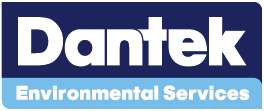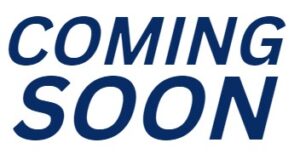Understanding and managing legionella risk – Hospitality
Welcome to our new blog series where we delve into the critical topic of Legionella control in the hospitality industry. Over the next quarter, we’ll be focusing on how Dantek caters to privately owned hotels, restaurants, and nationwide chains, ensuring peace of mind and offering practical advice for effective Legionella risk management.
At Dantek, we specialize in water hygiene and water treatment services, serving a wide range of organizations across Bristol, the South West, South Wales, and the Midlands. With a keen emphasis on prevention and control of Legionnaires’ disease, we begin our journey with you by conducting a comprehensive Legionella risk assessment, ensuring compliance with ACoP L8 and HSG274 standards.
As proud full members of the Legionella Control Association since 2007, our commitment to preventing and controlling Legionnaires’ disease is unwavering. With our innovative cloud-based electronic logbook, you’ll have real-time visibility of monitoring contracts, allowing you to stay informed day or night.
Established in 2000 by Dan Collins and Amy Richardson, we boast a team of dedicated professionals with extensive experience in water hygiene. Our field-based technicians, risk assessors, and engineers are fully trained and equipped to handle the complexities of Legionella risk management in the hospitality sector.
Understanding the unique challenges faced by hotels, bars, and restaurants, we’re here to provide practical insights into handling Legionella risk effectively. From appointing responsible persons to implementing control measures and maintaining meticulous records, we offer tailored solutions to meet your specific needs.
Whether you operate a large establishment with complex water systems or a smaller venue with mains-fed setups, our Legionella risk assessments are designed to ensure compliance with regulatory standards while addressing the nuances of your business.
As we start to explore Legionella control in the hospitality industry, it’s essential to understand the fundamental aspects of managing Legionella risk effectively. Let’s start by addressing some key points:
Who Handles Legionella Risk? Appointing competent individuals or teams, known as responsible persons, is imperative. Their role involves understanding water systems, identifying risks, and ensuring the safety of everyone on-site.
What to Look for in a Risk Assessment? During risk assessments, consider factors such as stagnant water, optimal temperatures for bacterial growth, conducive conditions like rust or sludge, and potential aerosolization of water droplets.
How to Assess the Risk Practically? Conducting thorough checks of water systems is essential. This includes clarifying responsibilities, ensuring personnel competency, having clear system diagrams, identifying risks, determining control measures, scheduling monitoring and maintenance, and establishing review timelines.
Control Measures Implementing various measures such as controlling water sprays, maintaining water flow to prevent stagnation, utilizing materials resistant to bacterial growth, water treatment, and regular temperature monitoring are vital steps in mitigating Legionella risk.
Keeping Records Maintaining meticulous records is crucial for managing Legionella risk effectively. Record-keeping should encompass activities, findings of risk assessments, action plans, water system conditions, and test results.
Whether your establishment is equipped with large plant items like calorifiers and tanks or operates without them, we offer comprehensive Legionella risk assessments tailored to your specific needs. Our surveys address the unique requirements of establishments of all sizes, ensuring thorough analysis and compliance with regulatory guidelines.
Our assessments are designed to ensure compliance with regulatory standards, including the Health and Safety Executive’s Legionella approved code of practice and guidance document ACoP L8 & HSG274.
Dantek’s Legionella risk assessment encompasses various critical components, including a full asset register, detailed system schematics, photographic documentation, and comprehensive recommendations for remedial and monitoring tasks. Our assessments are fully compliant with BS8580 standards, providing you with a thorough understanding of your water system’s risk profile and necessary actions for compliance.
Our team can also assist with the development and implementation of a Written Scheme of Control, essential for maintaining safe water systems on-site. Please refer to appendix 2.2, page 55, of the HSG274 part 2 for a summary of the requirements of a written scheme: https://www.hse.gov.uk/pubns/priced/hsg274part2.pdf
Additionally, we provide a Lite version of the Legionella risk assessment designed specifically for sites in the hospitality sector that do not have significant plant items. This streamlined assessment process is particularly valuable for locations with mains-fed systems, offering efficient compliance with regulatory standards while acknowledging the unique characteristics of every business.
For personalized assistance and expert guidance in Legionella risk management, contact Dantek at 01454 417 920 or email us at sales@dantek.co.uk.

 Managing Legionella Safety in the Sports Industry requires a systematic and tailored approach. With our custom-written scheme of control template, you can streamline your Legionella risk management efforts, ensuring compliance and effective risk mitigation. Remember, it is crucial for the statutory duty holder and responsible person to review and personalize the document to align with your organization’s practices. Take advantage of this valuable resource and proactively protect the health and well-being of all individuals within your facility and ensure the highest standards of legionella safety in the sports industry.
Managing Legionella Safety in the Sports Industry requires a systematic and tailored approach. With our custom-written scheme of control template, you can streamline your Legionella risk management efforts, ensuring compliance and effective risk mitigation. Remember, it is crucial for the statutory duty holder and responsible person to review and personalize the document to align with your organization’s practices. Take advantage of this valuable resource and proactively protect the health and well-being of all individuals within your facility and ensure the highest standards of legionella safety in the sports industry.